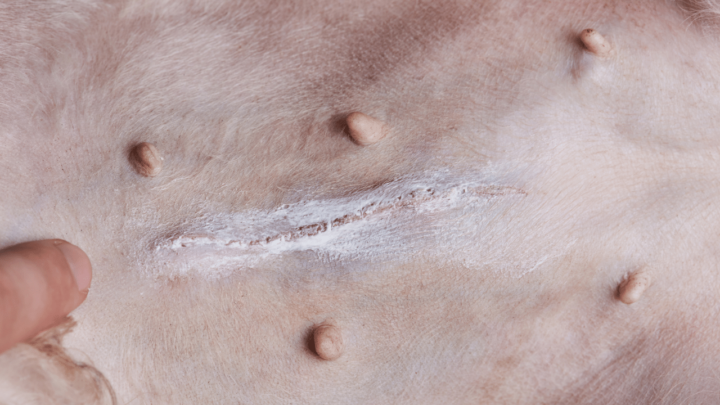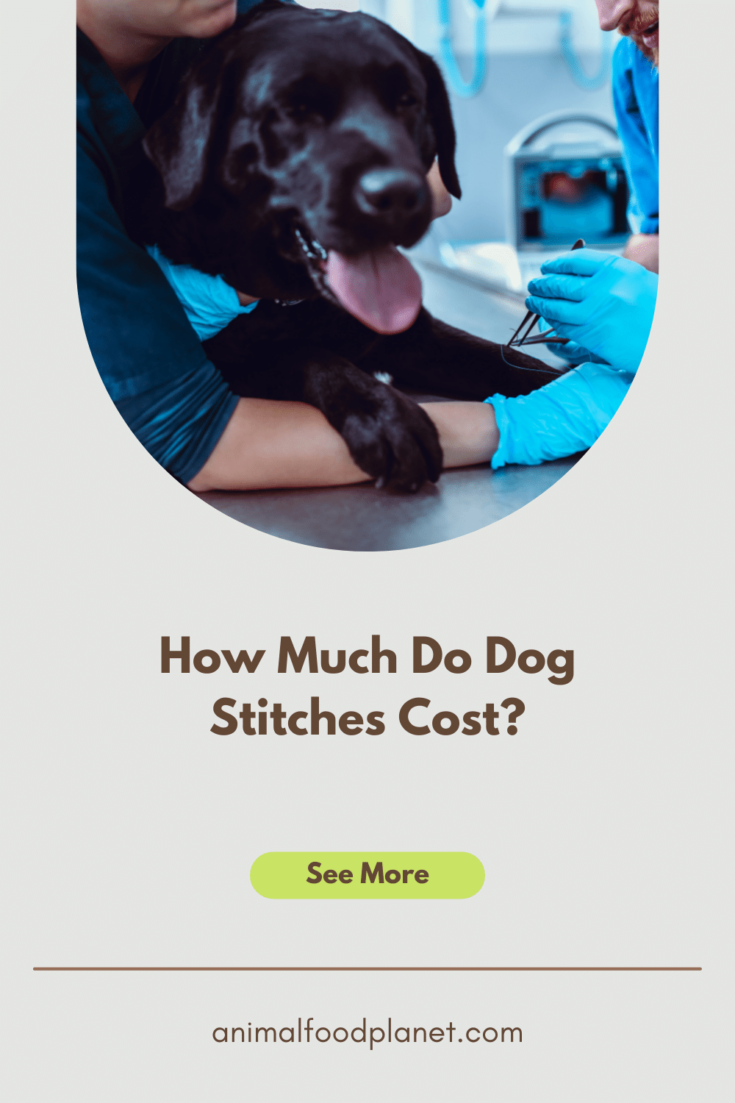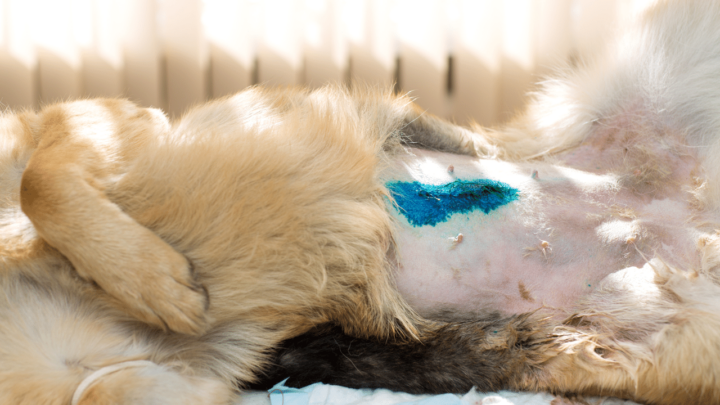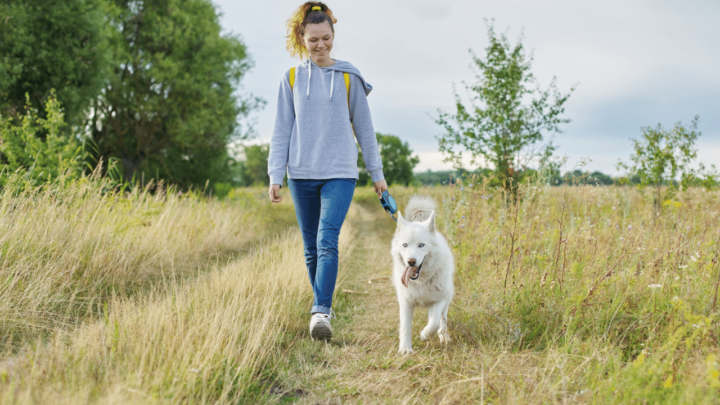As cute as they are, dogs often play dangerously and sometimes put themselves in harm’s way.
In some cases, the injury ends up in stitches. Other times, the stitches may be the aftermath of a surgical procedure.
Unfortunately, dogs don’t understand this precarious situation and may want to keep up with their normal life and daily activities. In fact, they sometimes chew or lick on the stitches.
This article discusses the cost of dog stitches, and more importantly, how to take care of a dog with stitches.
It’s important that you read it through this article because how fast your dog’s stitches heal depends on how you take care of the stitches and your dog as a whole.
How much do dog stitches cost?
In the United States, dog stitches cost between $100 – $300. The figure depends on a few factors, though. Some conditions may require your dog to be examined thoroughly. Examination costs between $30 and $45 and the cost will be added to the bill. The width and depth of the wound are determinants too. Deeper and wider injuries require longer stitches which cost more. In addition, your choice of a veterinarian is also a factor. That’s because different vets offer different charges for the same service or treatment.

How much do dog stitches cost
How to reduce the bill
We understand that everyone wants to give their pets the best treatment but sometimes, they can’t afford it.
That’s why we have given a few tips on how to reduce the cost of your dog’s stitches.
Remain loyal to a vet clinic
When all your pets are being treated in the same vet clinic, you may be rewarded for your loyalty.
Of course, the reward often comes in the form of discounts.
Ask for available payment plans
Many vets offer several payment plans, and these plans often border on payment by installments.
This will allow you to spread your payment over several weeks or months instead of paying it in full one time.

Dog Stitches – How much does it cost?
Consider low-cost clinics

Compare clinics and vets than can conduct dog stitches
Remember, vets don’t offer the same charges. You can decide to take your canine pal to the vet that offers the lowest charges within your city.
But, of course, don’t just make a decision solely on the vet’s professional fee.
After all, the quality of the vet’s work, as well as your canine pal’s overall health, should always be your top priority when choosing whom to work with.
Tips on how to take care of your dog’s stitches

Keeping good care of a dog with stitches is essential
Getting your dog’s wound stitched is only half of the job.
Taking care of him until his stitches heal up is the second and equally important half of the equation.
That’s why we deem it necessary to fill you in on how to take care of your dog and his stitches.
Keep monitoring the stitches
You need to continuously monitor your dog’s stitch in the first few days after the procedure. You want to know if the wound is healing up or it’s taking another dimension.
That’s why you should consult your vet when you notice any of the following:
- A large quantity of blood keeps flowing out of the stitch.
- Even the tiny droplets will also be an issue if it persists for more than 24 hours.
- The wound keeps discharging certain fluid.
- An offensive smell oozes out from the wound.
- Redness and excessive swelling.
Avoid bathing your dog
You should not bathe your dog the first few days after getting his wound stitched. The main objective is to prevent your dog’s stitches from getting wet as it can slow down the healing process.
Plus, getting your pup’s stitches soaked only makes your canine more susceptible to developing an infection later on. Remember, warm and moist areas like your dog’s wound are good breeding grounds for bacteria.
Cover the stitches if allowed
It is important that you prevent your dog from licking, scratching, or chewing his stitches.
You can’t blame him for this, though. Stitches sometimes get itchy.
However, discuss this with your vet first before covering the wound.
Walk him for short distances

Walk the dog only short distances to make sure the wound heals fast
At this time, your dog won’t have the strength for running or for long walks as he’s still recuperating.
That’s why should only take him for short walks so your pup can use his energy to heal his wound faster.
Keep his leash short
It is normal for dogs to attempt to run while going for a walk. So, you need to keep his leash short to be able to pull him back quickly.
No jumping or any rigorous play
During this recovery period, you may also want to prevent your dog from jumping or engaging in any rigorous activities, especially the ones that may stretch his body.
He may resist and throw some tantrums. Don’t get emotional when he’s doing this. Be firm.
Remember, you’re trying to protect him from deeper and more intense pain. Your furry friend may not understand this, but it’s for his own good.
Isolate him
Here’s the most difficult part. If you have other pets in your household, you may have to keep them away from the recuperating dog.
Unfortunately, your dog may feel abandoned or isolated and whine for hours. And you may not feel happy about it. Keep reminding yourself though that this isolation’s only necessary for a matter of days.
To make it up to him, spoil him with snacks during this period. Also, stay beside him for as long as you can so he won’t feel so lonely and feel like you’ve abandoned him.
Follow your vet’s instructions
This is the most important tip. Make sure you follow your vet’s instructions religiously. No two procedures are the same. They may seem similar, but they have certain differences.
Don’t apply any ointment or cream on your dog’s stitches unless your vet says so.
The fact that the application of certain ointments to Sally’s stitches facilitated the healing process does not mean the same ointment will work for Jake.
And if you think you need to apply any cream, consult your vet first.
Other points to note about dogs’ stitches
Wounds should be stitched within 6 to 8 hours
When your dog sustains a deep cut, it should be stitched within 6 to 8 hours or sooner. That’s why it is necessary to act fast. Get him examined as quickly as possible.
It is not in your place to determine whether a wound requires stitches or not. Leave that to your vet.
The length of a stitch does not affect its healing time
It is generally believed that shorter cuts should heal faster than longer ones.
When a wound is healing, the skin from both sides of the wound will cover up at about the same time. So, the length of a wound plays no role in this.
Longer and shorter wounds should heal about the same time.
If you think your pup’s wound starts to get infected or takes a longer-than-usual time to heal, seek your vet’s consult right away.
Conclusion
Dog stitches generally cost between $100 and $300, depending on the circumstances surrounding the injury and your choice of vet clinic.
Also, remember to monitor the stitches, and follow all your vet’s instructions on post-operative care to the letter to avoid infections setting in.


